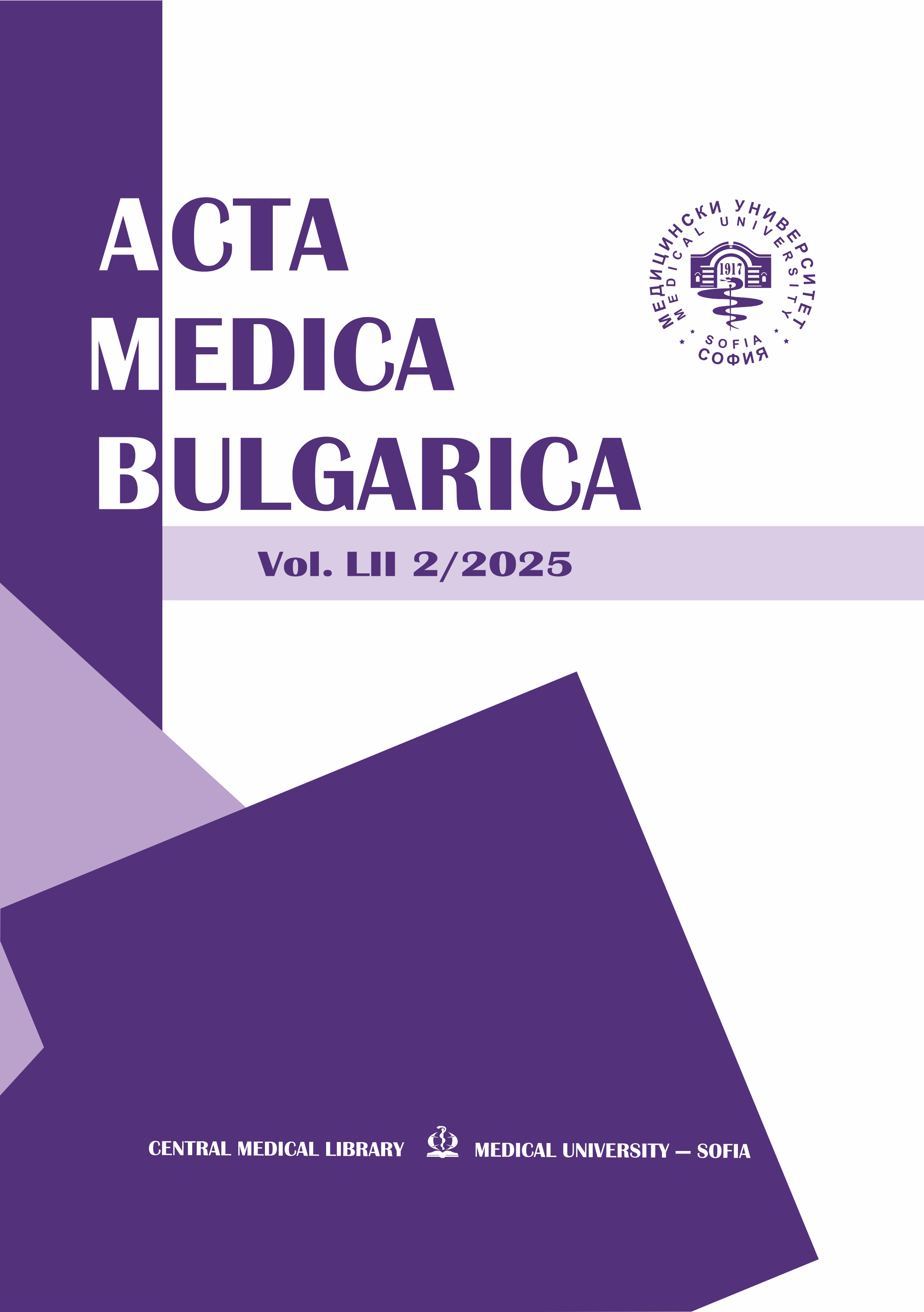Systemic nitric oxide synthase inhibition suppresses apelin-induced rise in body temperature in rats
DOI:
https://doi.org/10.2478/AMB-2025-0046Keywords:
apelin, aminoguanidine, L-NAME, metabolism, nitric oxide synthase, thermoregulationAbstract
Apelin is a peptide involved in the regulation of various physiological processes, including thermoregulation, metabolism, and energy balance. This study investigates the role of nitric oxide (NO) in mediating apelin’s eff ects on body temperature, food intake, and body mass gain in rats. Using the non-selective nitric oxide synthase (NOS) inhibitor LNAME and the selective inducible NOS inhibitor aminoguanidine (AG), we assessed how systemic inhibition of NO synthesis modulates apelin-induced responses. Male Wistar rats were administered intraperitoneal injections of [Pyr1]apelin-13 following pre-treatment with L-NAME or AG. Our results show that both L-NAME and AG suppressed the apelin-induced rise in body temperature, with L-NAME having a more pronounced effect. Additionally, LNAME significantly reduced apelin-induced food intake and body mass gain, while AG had a lesser impact. These findings suggest that NO plays a key role in mediating the apelin’s thermoregulatory and metabolic eff ects. The differential outcomes between L-NAME and AG highlight the potential involvement of multiple NOS isoforms in these processes. Further investigation into the distinct roles of NOS isoforms may provide deeper insights into NO-apelin interactions and their relevance to metabolic regulation, offering potential therapeutic targets for metabolic disorders.
References
Hu G, Wang Z, Zhang R et al. The Role of Apelin/Apelin Receptor in Energy Metabolism and Water Homeostasis: A Comprehensive Narrative Review. Front Physiol., 2021,12:632886
Knauf C, Drougard A, Fournel A, et al. Hypothalamic actions of apelin on energy metabolism: new insight on glucose homeostasis and metabolic disorders. Horm Metab Res., 2013,45(13):928-934.
Jászberényi M, Bujdosó E, Telegdy G. Behavioral, neuroendocrine and thermoregulatory actions of apelin-13. Neuroscience., 2004,129(3):811-816.
Valle A, Hoggard N, Adams AC et al. Chronic central administration of apelin-13 over 10 days increases food intake, body weight, locomotor activity, and body temperature in C57BL/6 mice. J Neuroendocrinol., 2008,20(1):79-84.
Hristov M, Andreeva-Gateva P. Eff ects of [Pyr1]apelin-13 on body temperature, food intake, and body mass in fasted rats: role of cystathionine gamma-lyase. Current Topics in Peptide and Protein Research., 2023,24:77-83.
Branco LG, Soriano RN, Steiner AA. Gaseous mediators in temperature regulation. Compr Physiol, 2014,4(4):1301-1338.
Kozak W, Kozak A. Genetic Models in Applied Physiology. Differential role of nitric oxide synthase isoforms in fever of different etiologies: studies using Nos gene-deficient mice. J Appl Physiol (1985), 2003, 94(6):2534-2544.
Soszynski D, Chelminiak M. Intracerebroventricular injection of neuronal and inducible nitric oxide synthase inhibitors attenuates fever due to LPS in rats. J Physiol Pharmacol, 2007, 8(3):551-561.
Steiner AA, Rudaya AY, Ivanov AI et al. Febrigenic signaling to the brain does not involve nitric oxide. Br J Pharmacol, 2004, 141(7):1204-1213.
Chang CP, Lee CC, Chen SH et al. Aminoguanidine protects against intracranial hypertension and cerebral ischemic injury in experimental heatstroke. J Pharmacol Sci, 2004, 95(1):56-64.
Hristov M, Lazarov L. Inhibition of nitric oxide synthase or cystathionine gamma-lyase abolishes leptin-induced fever in male rats. J Therm Biol, 2023, 112:103443.
Hristov M. Enhanced food intake suppression and body mass reduction with combined l-name and leptin administration in fasted rats. Trakia journal of sciences, 2024, 22(3):7.
Tatemoto K, Takayama K, Zou MX, et al. The novel peptide apelin lowers blood pressure via a nitric oxide-dependent mechanism. Regul Pept, 2001, 99(2-3):87-92.
Jia YX, Lu ZF, Zhang J, et al. Apelin activates L-arginine/nitric oxide synthase/nitric oxide pathway in rat aortas. Peptides, 2007, 8(10): 2023-2029.
Azizi Y, Faghihi M, Imani A, et al. Post-infarct treatment with [Pyr1]-apelin-13 reduces myocardial damage through reduction of oxidative injury and nitric oxide enhancement in the rat model of myocardial infarction. Peptides, 2013, 46:76-82.
Gholamzadeh R, Aboutaleb N, Nazarinia D. Intravenous injection of apelin-13 improves sensory-motor balance deficits caused by cerebral ischemic reperfusion injury in male wistar rats via restoration of nitric oxide. J Chem Neuroanat, 2021, 112:101886.
Gao Z, Zhong X, Tan YX, et al. Apelin-13 alleviates diabetic nephropathy by enhancing nitric oxide production and suppressing kidney tissue fibrosis. Int J Mol Med, 2021, 48(3):175.
Duparc T, Colom A, Cani PD, et al. Central apelin controls glucose homeostasis via a nitric oxide-dependent pathway in mice. Antioxid Redox Signal, 2011, 15(6):1477-1496.
Higuchi K, Masaki T, Gotoh K, et al. Apelin, an APJ receptor ligand, regulates body adiposity and favors the messenger ribonucleic acid expression of uncoupling proteins in mice. Endocrinology, 2007, 148(6):2690-2697.
Than A, He HL, Chua SH, et al. Apelin Enhances Brown Adipogenesis and Browning of White Adipocytes. J Biol Chem, 2015, 290(23): 14679-14691.
Giordano A, Tonello C, Bulbarelli A, et al. Evidence for a functional nitric oxide synthase system in brown adipocyte nucleus. FEBS Lett, 2002, 514(2-3):135-140.
Petrović V, Buzadzić B, Korać A, et al. NO modulates the molecular basis of rat interscapular brown adipose tissue thermogenesis. Comp Biochem Physiol C Toxicol Pharmacol, 2010, 152(2):147-159.
Hristov M, Andreeva-Gateva P. Eff ects of simultaneous pharmacological inhibition of cystathionine gamma-lyase and nitric oxide synthase on food and water intake, body mass gain, and body temperature in rats. Journal of Biomedical and Clinical Research, 2024, 17:133–42.
Kamerman P, Mitchell D, Laburn H. Circadian variation in the eff ects of nitric oxide synthase inhibitors on body temperature, feeding and activity in rats. Pfl ugers Arch, 2002, 443(4):609-616
Downloads
Published
Issue
Section
License
Copyright (c) 2025 M. Hristov, P. Andreeva-Gateva (Author)

This work is licensed under a Creative Commons Attribution-NonCommercial-NoDerivatives 4.0 International License.
You are free to share, copy and redistribute the material in any medium or format under these terms.


 Journal Acta Medica Bulgarica
Journal Acta Medica Bulgarica 